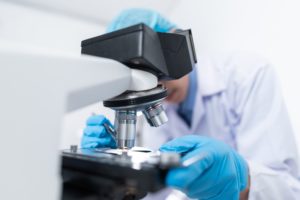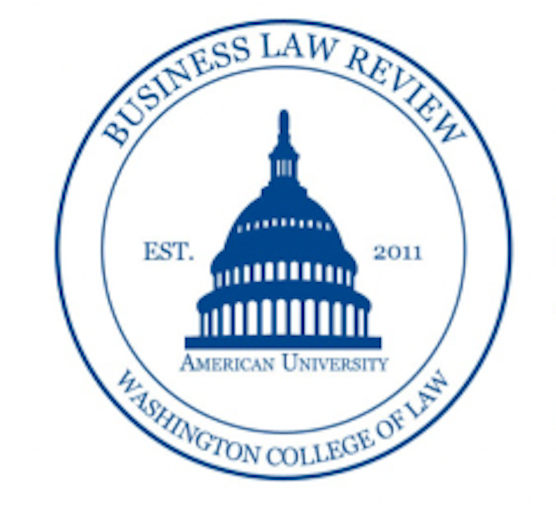
By: Connor R. Sheehy
While traditional utility patents carry some of the strongest protections of intellectual property, they accordingly come with the trade-off of detailed disclosure.[1] That is, to obtain patent protection, an innovator’s disclosure of their invention must be done in such detail that it enables another individual with ordinary skill in the art to create and use the same invention when the patent expires.[2] This requirement is called enablement.[3] However, in the pharmaceutical and biotechnical industries, innovation is commonly driven by functionality, which often leads to broad, functional claims in patent applications.[4] This is the case with the patent at the root of Amgen, Inc. v. Sanofi,[5] a Federal Circuit case that has recently received certiorari from the Supreme Court.[6]
Amgen Inc. (“Amgen”) has a patent over antibodies in development for cholesterol-lowering therapy, and the patent primarily describes the function, rather than structure, of the antibodies.[7] This leads the patent to potentially cover thousands of antibodies beyond the few that Amgen specifically disclosed, because the patent makes a claim over antibodies in general that bind to a particular enzyme (rather than claiming specific ones currently in development, described by structure).[8] This disclosure is the subject of an eight-year patent infringement case that will now be heading to the Supreme Court this term.[9]
In order to successfully meet the enablement requirement of a patent application under U.S. patent law, Section 112(a) provides that the written disclosure must provide a description of “the invention, and of the manner and process of making and using it, in such full, clear, concise, and exact terms as to enable any persons skilled in the art to which it pertains, or which it is most nearly connected, to make and use the same.”[10] Some circuits, particularly the Federal Circuit in this case, ruled that this enablement standard requires the individual to disclose the specification in a way that allows other individuals with ordinary skill in the art to “reach the full scope of the claimed embodiments” without “substantial time and effort.”[11] While Amgen emphasizes that the “full scope” test conflicted with the plain, arguably less demanding language of Section 112(a), the Federal Circuit found that allowing such a patent to stand would allow Amgen to lay claim to antibodies outside the scope of their specifications into a general genus of antibodies.[12]
Amgen’s policy position is that allowing such claims to stand incentivizes further innovation in the biotechnical and pharmaceutical industries, because such a claim protects discoveries and innovation incident to initial development.[13] Amgen further argues that allowing these claims benefits consumers despite any monopolizing effects on competition within the industry.[14] The Supreme Court previously did not express interest in ruling on this enablement issue, but responded to the petition for certiorari in this case by requesting a brief from the Solicitor General and, shortly into the October 2022 term, granted certiorari.[15]
The Supreme Court’s review of the enablement standard could result in a huge effect on the pharmaceutical and biotechnical fields. The use of genus claims is largely dying out as several courts demonstrate amenability to “broadness” arguments like those made by Sanofi S.A. (“Sanofi”) in this case, but not all legal scholars find this development to be positive as law or policy.[16] When reviewing the standard for enablement, the Supreme Court should consider both the proper understanding of the language in Section 112(a) and the policy implications that could affect innovation in these industries, which they have an opportunity to do in the Amgen case. If genus claims are revived, the benefits of innovation may come with sweeping monopolies on innovation held by the largest or leading companies, who could orient their patents as broadly as possible. On the other hand, if the “death” of the genus claim in the Federal Circuit is affirmed by the Supreme Court, an increase in competition will likely result from the prohibition of broad patents that restrict innovation by other companies; however, such a ruling may also come with disincentivizing effects for companies that are seeking to do broader research driven by functionality.[17]
When the Supreme Court hears the Amgen case later this term, the decision could result in precedent changing the way the pharmaceutical and biotechnical industries behave as they pursue innovation. Furthermore, it could provide a universal standard for reviewing the enablement requirement of Section 112(a) in all circuits, benefiting the development of nationally consistent standards for patent review.
[1] See Erin J.D. Austin & Dominick A. Conde, The Intellectual Property Review: USA, The Law Reviews (Apr. 24, 2022), https://thelawreviews.co.uk/title/the-intellectual-property-review/usa.
[2] Orly Lobel, Filing for a Patent Versus Keeping Your Invention a Trade Secret, Harvard Bus. Rev. (Nov. 21, 2013), https://hbr.org/2013/11/filing-for-a-patent-versus-keeping-your-invention-a-trade-secret.
[3] Id.
[4] Carlson Caspers, The Federal Circuit Finds Functionally-Based Genus Claims To Be Invalid To Be Invalid For Lack of Written Description, Carlson Caspers (July 22, 2014), https://www.carlsoncaspers.com/the-federal-circuit-finds-functionally-based-genus-claims-to-be-invalid-for-lack-of-written-description/.
[5] 987 F.3d 1080, 1088 (Fed. Cir. 2021).
[6] See generally id.
[7] Jessica H. Zafonte & Joseph V. Saphia, The ‘Amgen v. Sanofi’ Enablement Battle and Best Practices in Light of the Federal Circuit’s §112(a) Opinion on Broad, Functional Genus Claims, N.Y. Law J. (June 1, 2022, 11:40 AM), https://www.law.com/newyorklawjournal/2022/06/01/the-amgen-v-sanofi-enablement-battle-and-best-practices-in-light-of-the-federal-circuits-%C2%A7112a-opinion-on-broad-functional-genus-claims/?slreturn=20221001174605.
[8] Id.
[9] Id.
[10] 35 U.S.C. §112(a).
[11] Amgen, 987 F.3d at 1088.
[12] Id. at 1086.
[13] See Brian V. Slater and Audrey Sparschu, Haug Partners LLP, Can Biopharma Functional Genus Patent Claims Be Resuscitated?, JD Supra (Apr. 30, 2021), https://www.jdsupra.com/legalnews/can-biopharma-functional-genus-patent-9728853/.
[14] Id.
[15] See Idenix Pharm. LLC v. Gilead Scis., Inc., 141 S. Ct. 1234 (2021) (cert. denied); Richard McCormick, Amgen Inc. v. Sanofi: Does the Supreme Court’s Call for the Solicitor General’s Views Signal an Intention to Resolve Important Enablement Questions for Genus Claims, Mayer Brown (May 3, 2022), https://www.mayerbrown.com/en/perspectives-events/blogs/2022/05/amgen-inc-v-sanofi-does-the-supreme-courts-call-for-the-solicitor-generals-views-signal-an-intention-to-resolve-important-enablement-questions-for-genus-claims.
[16] Dmitry Karshtedt, et al., The Death of the Genus Claim, 35 Harv. J. Law & Tech. 1, 1 (2021).
[17] Id. at 4.


